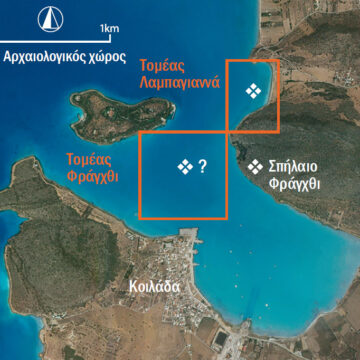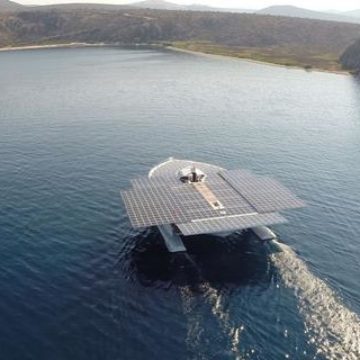Underwater research in the Bay of Kiladha (Argolis)
Since 2012, the Bay of Kiladha Project, a joint research collaboration between the Greek Ephorate of Underwater Antiquities (EUA) and the University of Geneva, under the aegis of the Swiss School of Archaeology in Greece (ESAG), aims at studying submerged prehistoric sites and landscapes in a small bay in Southern Greece. The project is directed by Despina Koutsoumba (EUA) and Julien Beck (University of Geneva), under the supervision Aggeliki Simosi (EUA) and Karl Reber (ESAG).
In 2016-2017, the team of Greek and Swiss archaeologists focused its attention on an Early Bronze Age offshore settlement discovered to the north of the Bay of Kiladha, at Lambayanna. The site was surveyed with geophysical instruments and trial trenches were conducted to clarify its plan and chronology. The deepest layers yielded pottery of the transitional phase between the Final Neolithic and the Early Bronze Age. The earliest layers are associated with numerous murex shells. Some shells are broken in a specific way, which might provide some of the earliest evidence for the extraction of purple color.
In 2020 and 2021, the Greek-Swiss team continued exploring the submerged prehistoric landscape of the Bay of Kiladha (Argolis). In the sector of Lambayanna, further survey work was carried out at the Early Bronze Age settlement that is today under water. The numerous finds, in particular pottery fragments and stone tools, were studied in Athens, where the excavation material is stored.

